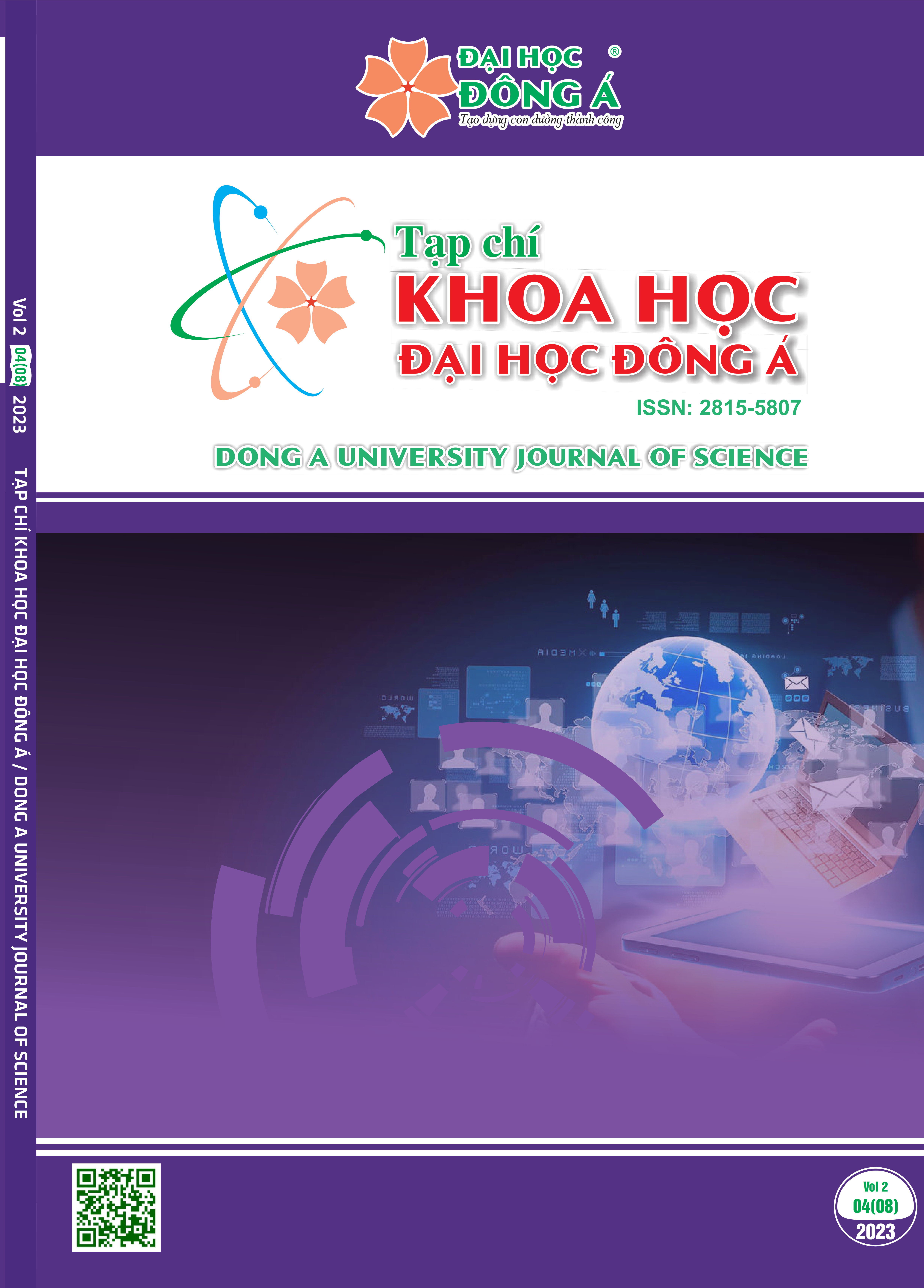The Impact of Electronic Word-of-Mouth (eWOM) on Online Purchase Intention of Generation Z in Da Nang
Main Article Content
Abstract
The study aims to determine the impact of electronic word-of-mouth (eWOM) on the online purchase intention of Gen Z in Da Nang City. Data for the study was collected through direc and online surveys, with the three main groups being pupils, students, and white-collar workers. 350 observations were used to check the correlation between variables by using structural equation modeling (SEM). Our findings indicate that all of the research hypotheses are accepted, have both statistical significance and practicality, and especially contribute to proving the rightness of previous hypotheses and providing support for further research. As follows, the quality of eWOM, the consumer's trust in eWOM, experiential knowledge, and the consumer's concern are the main factors affecting the acceptance of eWOM. From these results, the acceptance of eWOM affects the online purchase intention by three elements: the attitude toward the behavior, subjective norms, and perceived behavioral control. The findings revealed some feasible solutions in practical situations to help companies improve their online sales performance for the Gen Z generation. It is also the foundation for developing the Evisi Young app and for further research.
Article Details
Keywords
Electronic word-of-mouth, online purchase intention, Generation Z, eWOM, eWOM adoption
References
Trần Thanh Tú, (2022), “Tác động của truyền miệng điện tử đến ý định mua hàng trực tuyến tại Thành phố Hồ chí Minh”, Tạp chí khoa học kinh tế, số 10 (2), tr. 64-82.
Lam, A. Y. C., Lau, M. M., Cheng, C., Wong, M. Y., (2019), “The impact of electronic word-of-mouth on young consumers' purchase intention in Hong Kong”, IC4E'19: Proceedings of the 10th International Conference on E-Education, E-Business, E-Management and E-Learning, pp. 329–333.
Ajzen, I., (1991), The theory of planned behavior, Organizational behavior and human decision.
Bansal, H. S., & Voyer, P. A., (2000), “Word-of-mouth process within a service purchase decision context”, Journal of Service Research, 3 (2), pp. 166-177.
Chatterjee, P., (2001), “Online Reviews: Do Consumers Use Them?”, Advances in Consumer Research, 28 (1), pp. 129–134.
Cheung, M., Luo, C., Sia, C., & Chen, H., (2009), “Credibility of electronic word-of-mouth: Informational and normative determinants of on-line consumer recommendations”, International Journal of Electronic Commerce, 13 (4), pp. 9-38.
Chevalier, J. A., & Mayzlin, D., (2006), “The Effect of Word of Mouth on Sales: Online Book Reviews”, Journal of Marketing Research, 43 (3), pp. 345-354.
DeLone, W., & McLean, E. R., (2003), “The DeLone and McLean model of information systems success: A ten-year update”, Journal of Management Information Systems, 19 (4), pp. 9–30.
Fan, Y. W, Miao, Y .F, Fang, Y. H & Lin, R. Y., (2013), “Establishing the Adoption of Electronic Word-of-Mouth through Consumers’ Perceived Credibility”, International Business Research, 6 (3), pp. 58-65.
Gilly, M. C., Graham, J. L., Wolfinbarger, M. F., & Yale, L. J., (1998), “A dyadic study of interpersonal information search”, Journal of Academic Marketing Science, 26 (2), pp. 83-100.
Hansen, T., Jensen, J. M., & Solgaard, H. S., (2004), “Predicting online grocery buying intention: a comparison of the theory of reasoned action and the theory of planned behavior”, International Journal of Information Management, 24(6), pp. 539-550.
Hennig-Thurau, T., Gwinner, K. P., Walsh, G., & Gremler, D. D., (2004), “Electronic word-of mouth via consumer-opinion platforms: What motivates consumers to articulate themselves on the internet?”, Journal of Interactive Marketing, 18 (1), 38-52.
Laroche, M., Kim, C., Zhou, L., (1996), “Brand Familiarity and Confidence as Determinants of Purchase Intention: An Empirical Test in a Multiple Brand Context”, Journal of Business Research, 37 (2), pp. 115-120.
Mohammad, R. J. & Neda S., (2012), “The effect of electronic word of mouth on brand image and purchase intention”, Marketing Intelligence & Planning, 30 (4), pp. 460-476.
Palka, W., Pousttchi, K., & Wiedemann, D. G. (2009), “Mobile word-of-mouth-A grounded theory of mobile viral marketing”, Journal of Information Technology, 24 (2), pp. 172-185.
Park, D. H., & Lee, J., (2008), “eWOM overload and its effect on customer behavioral intention depending on customer involvement”, Electronic Commerce Research and Applications, 7 (4), 386-398.
Park, D. H., Lee, J., & Han, I., (2007), “The effect of on-line consumer reviews on consumer purchasing intention: The moderating role of involvement”, International journal of electronic commerce, 11 (4), pp. 125-148.
Pavlou, P. A., & Fygenson, M., (2006), “Understanding and predicting electronic commerce adoption: An extension of the theory of planned behavior”, MIS quarterly, pp. 115-143.
Petty, R. E., & Cacioppo, J. T., (1984), “The effects of involvement on response to argument quantity and quality: Central and peripheral routes to persuasion”, Journal of Personality and Social Psychology, 46 (1), pp. 69-81.
Salisbury, W. D., Pearson, R. A., Pearson, A. W. & Miller, D. W. (2001), “Perceived security and World Wide Web purchase intention”, Industrial Management & Data Systems, 101 (4), pp. 165-177.
Shu, M., & Scott, N., (2014), “Influence of social media on Chinese students’ choice of an overseas study destination: An information adoption model perspective” Journal of Travel and Tourism Marketing, 31 (2), pp. 286-302.
Sussman, S. W., & Siegal, W. S., (2003), “Informational influence in organizations: An integrated approach to knowledge adoption”, Information systems research, 14 (1), pp. 47-65.


